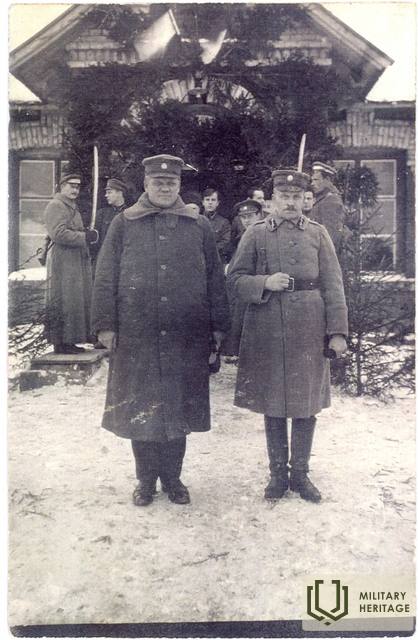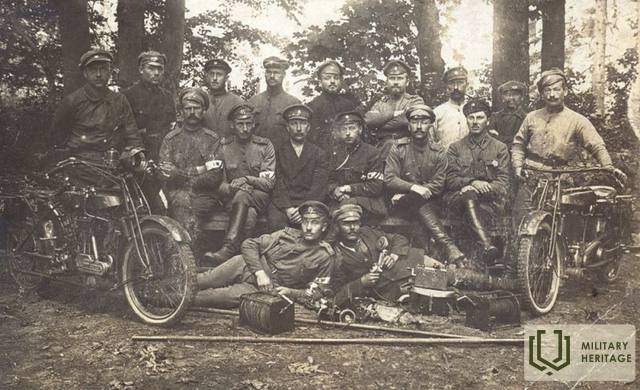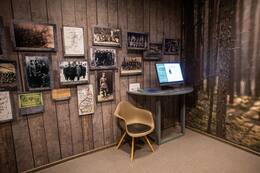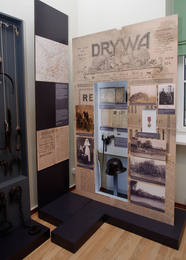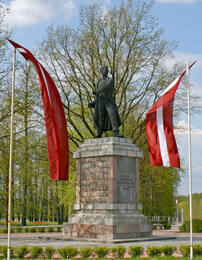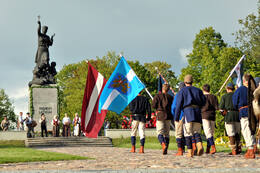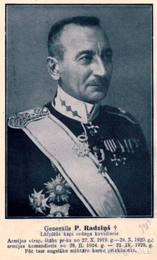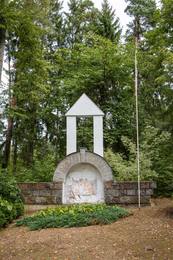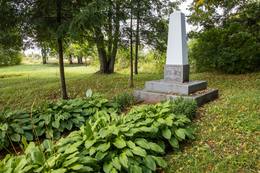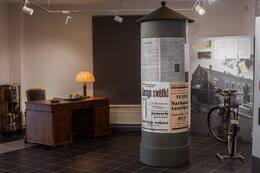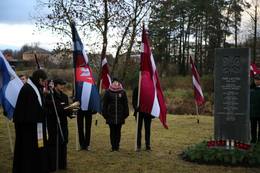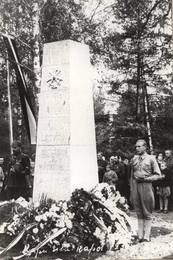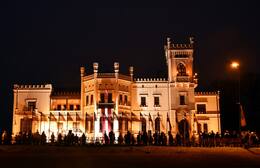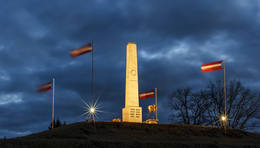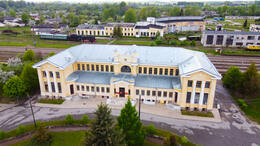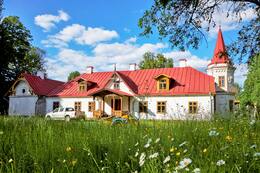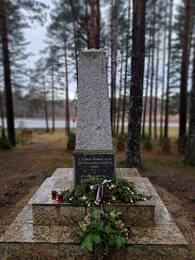Latgalos išlaisvinimas nuo bolševikų
I Nepriklausomybės karai
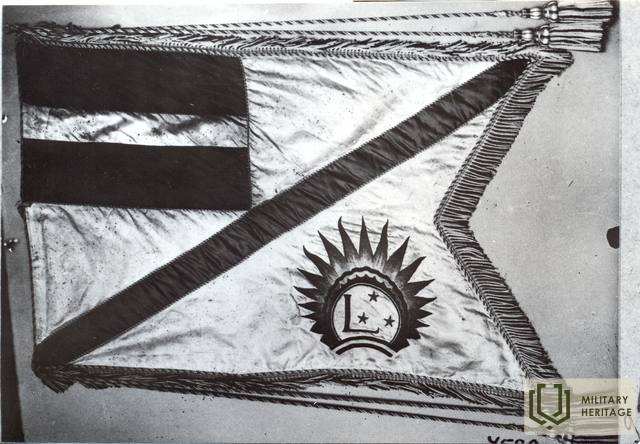
Po pergalės prieš Pavelo Bermonto pajėgas Latvijos vyriausybė nusprendė vykdyti Latgalos išlaisvinimo operaciją, kuriai reikėjo kaimyninių šalių paramos. Po nesėkmingų derybų su Lietuva, gruodžio pabaigoje vyriausioji vadovybė susitarė dėl bendradarbiavimo su Lenkijos kariuomene. 1920 m. sausio 3 d. Lenkijos ir Latvijos pajėgos perėjo į puolimą Pietų Latgaloje, lenkams išlaisvinus Daugpilį, o sausio 9 d. Latvijos armijai – Šiaurės Latgaloje, iki vasario pradžios išlaisvinus visą Latgalą.
Latgalos išlaisvinimo metu Latvijos armijos vyriausiasis vadas buvo generolas Jānis Balodis, o vyriausiojo vado štabo viršininkas – pulkininkas Pēteris Radziņš. Daugpilio užėmimo operacijai vadovavo lenkų generolas Edvards Ridzs-Smiglijs. Rėzeknės ir centrinės Latgalos dalies išlaisvinimui vadovavo Kuržemės divizijos vadas pulkininkas leitenantas Jānis Puriņš. Šiaurės Latgalos išlaisvinimo operacijai vadovavo Latgalos divizijos štabas Vecgulbenėje, vadovaujamas pulkininko Krišjānio Berkio.
Tuo pačiu metu, 1920 m. sausio pradžioje, į Maskvą vyko Latvijos Raudonojo Kryžiaus delegacija, kurios užduotis buvo sudaryti paliaubas, kurios buvo pasirašytos sausio 30 d. (įsigaliojo vasario 1 d.). Taikos derybos prasidėjo Maskvoje balandžio 16 d., tačiau vasarą tęsėsi Rygoje, jos taip pat priklausė nuo įvykių Sovietų Rusijos ir Lenkijos frontuose. Taikos sutartis buvo pasirašyta Rygoje 1920 m. rugpjūčio 11 d.
1920 m. balandžio ir gegužės mėn. naujai suformuota Žiemgalos divizija prisijungė prie kariuomenės Latgalos fronte, o balandžio viduryje Lenkijos kariuomenė paliko Latviją, kol kas pasilikdama tik Daugpilyje. Liepos pradžioje jie buvo priversti palikti miestą dėl Raudonosios armijos puolimo. Tuomet Latvijos pajėgos perėmė dalį dabartinio Gryvos miesto (tuo metu tai buvo atskiras miestas kairiajame Dauguvos krante) ir šešias Ilūkstės apskrities valsčius, kurie buvo paskelbti Lenkijai priklausančiais. Jau po taikos sudarymo 1920 m. rugsėjo pradžioje 12-asis Bauskės pėstininkų pulkas ir kiti daliniai atstūmė Lietuvos kariuomenės dalinius Subatės rajone, tačiau spalį Latvijos kariuomenė užėmė paskutines Ilūkstės apskrities valsčius, kuriuos paliko Lietuvos kariuomenė.
Daugiau informacijos šaltinių
Ērikas Jėkabsonsas. Latvijos nepriklausomybės karas. Latvijos laikinosios vyriausybės ir jos ginkluotųjų pajėgų kova už Latvijos nepriklausomybę nuo 1918 m. lapkričio 18 d. iki 1920 m. rugpjūčio 11 d. – Nacionalinė enciklopedija: https://enciklopedija.lv/skirklis/22216-Latvijas-Neatkar%C4%ABbas-kar%C5%A1
Juris Ciganovs. Latgalos išlaisvinimas 1920 m. žymėjo Latvijos nepriklausomybės karo pabaigą. SARGS.LV, 2020-01-03. https://www.sargs.lv/lv/latvijas-neatkaribas-kars/2020-01-03/latgales-atbrivosana-1920-gada-iezimeja-latvijas-neatkaribas
Latgalos išlaisvinimas. Vikipedija. https://lv.wikipedia.org/wiki/Latgales_atbr%C4%ABvo%C5%A1ana
Šiaurės Latgalos išlaisvinimo operacija. Vikipedija. https://lv.wikipedia.org/wiki/Zieme%C4%BClatgales_atbr%C4%ABvo%C5%A1anas_oper%C4%81cija
Susijusios vietos
Ekspozicija „Šiaurės Latgala kovose už laisvę“ (Ziemeļlatgale brīvības cīņās)
Muziejus įsikūręs Balvų dvaro komplekse, buvusiame dvaro klėties pastate.
Ekspozicija supažindina su Latvijos Nepriklausomybės kovų istorija iš Šiaurės Latgalos perspektyvos, pasakoja Latgalos partizanų pulko kūrimosi ir veiklos istoriją. Čia eksponuojamos anksčiau niekur nepublikuotos nuotraukos ir dokumentų kopijos, įskaitant 1919 m. liepos 5 d. įsakymą dėl pulko suformavimo. Ypatingą ekspozicijos dalį sudaro 1919 m. liepos–spalio mėn. rusų kalba rašyti vidiniai pulko įsakymai. Jie atskleidžia šio vietinio karinio dalinio formavimosi ypatumus – jame kartu kovojo latviai, latgaliai, rusai ir žydai. Tik pulkui tapus visaverte Latvijos kariuomenės dalimi ir jį papildžius mobilizuotiems kariams iš kitų Latvijos regionų, vidiniai dokumentai pradėti rengti latvių kalba. Ekspozicijoje pasakojama apie Šiaurės Latgalos išvadavimo operaciją. 1920 m. sausio 9–15 d. Latvijos kariuomenės Latgalos divizijos vykdytų mūšių metu buvo išlaisvintos Viliakos, Jaunlatgalės ir Karsavos apylinkės. Galima apžiūrėti su šia operacija susijusius eksponatus, įskaitant ir Lat galos partizanų pulko veiklą Karsavos išvadavimo metu.
Preilių istorijos ir taikomosios dailės muziejaus paroda „Muziejaus istorijos Latvijai“
Įsikūręs Preilių kultūros centro patalpose.
Preilių istorijos ir taikomosios dailės muziejuje (PVLMM) eksponuojama paroda „Muziejaus istorijos Latvijai“ apie Pirmąjį pasaulinį karą, Nepriklausomybės karą ir Antrąjį pasaulinį karą.
Preilių istorijos ir taikomosios dailės muziejaus ekspozicijos „Muziejaus istorijos Latvijai“ (atidarytos 2018 m.) skyrius „Dryvio istorija“ skirtas Pirmajam pasauliniam karui, Nepriklausomybės karui ir Latgalos išvadavimui, taip pat Lāčplēšanas karo ordino kavalieriams. Ekspozicijos skyrius „Vėliavos istorija“ pasakoja apie sudėtingus Antrojo pasaulinio karo įvykius, kurių metu Preilijos gyventojai nukentėjo nuo trėmimų, Holokausto, dalyvavimo kariaujančių šalių kariniuose daliniuose, o po karo – nacionalinių partizanų gretose. Taip pat eksponuojamas Preilių gyventojui ir žydų gelbėtojui Vladislavui Vuškanui įteiktas medalis „Pasaulio tautų teisuolis“.
Ekskursijos rusų ir anglų kalbomis teikiamos iš anksto susitarus.
Paminklas žuvusiems Latgalos partizanų pulko kariams 1919–1920 m.
Latvijos Nepriklausomybės karo (1918–1920 m.) metu Balvių krašte vietos gyventojų iniciatyva buvo suformuotas Balvių partizanų skyrius, kuris netrukus buvo pertvarkytas į Latgalos partizanų pulką.
Pulko paminklo idėja kilo dar 1927 m. 1933 m. buvęs Latgalos partizanų pulko kareivis ir akmenkalys Jānis Pilmanis savo lėšomis pastatė 5 metrų aukščio akmeninį paminklo postamentą. Patį bronzinį paminklą sukūrė menininkas Kārlis Jansons.
Paminklas, skirtas žuvusių pulko karių atminimui, buvo atidengtas 1938 m. rugpjūčio 14 d., dalyvaujant generolui Jāniui Balodžiui. Nors oficialus paminklo pavadinimas buvo „Sargybos partizanas“, netrukus žmonės paminklą ėmė vadinti tiesiog „Balva Stanislava“.
Latviją okupavus SSRS, 1941 m. pavasarį Abrenės apskrities vykdomojo komiteto sprendimu paminklas buvo nugriautas. Aukštas postamentas buvo nugriautas, tačiau pats bronzinis paminklas liko Balvų policijos kieme.
Vokiečių okupacijos metu paminklo postamentas nebuvo restauruotas, tačiau pats bronzinis paminklas buvo pastatytas ankstesnėje vietoje. Po antrojo sovietų okupantų sugrįžimo 1944 m. paminklas buvo visiškai sunaikintas.
Latvijai atgavus nepriklausomybę, Balvų gyventojai rinko aukas Latgalos partizanų paminklo restauravimui. 1993 m. lapkričio 11 d. Balvuose buvo atidengtas restauruotas paminklas, kurį sukūrė menininko Kārlio Jansono sūnus Andrejus Jansonas.
Prie paminklo pjedestalo galo pritvirtinta papildoma atminimo lenta su užrašu „Renovuota taip pat pagerbiant 1940–1954 m. Latgalos nacionalinės laisvės kovotojus“.
Paminklas Jaškove Latvijos išsivadavimo kovoje žuvusiems kariams
Įsikūręs kairėje Viliakos–Vientulio kelio atkarpos (P35) pusėje, šalia Jaškovos kapinių koplyčios.
Paminklas Latvijos ir Estijos kariams, žuvusiems Nepriklausomybės kare.
Skulptoriaus Kārlio Zemdegos sukurtas paminklas 1920 m. Jaškove žuvusiems Išvadavimo kare kariams atminti pirmą kartą buvo atidengtas 1935 m. rugsėjo 22 d. Viliakos brolių kapinėse, įkurtose 1929 m.
Laisvės kova prieš Raudonąją armiją Viliakos krašte prasidėjo 1920 m. sausio 9 d., kai Latvijos armija ir Latgalos partizanų pulkas užpuolė miestą. Jose dalyvavo ir Estijos kareiviai. Viliaka buvo išlaisvinta sausio 9 d., tačiau kovos į rytus nuo jos tęsėsi dar kelias dienas. Tiek prieš, tiek po Viliakos išlaisvinimo žuvę kareiviai buvo laidojami įvairiose vietos gyventojams žinomose vietose. Latvijos valstybei stabilizuojantis, pradėta galvoti apie bendrų brolių kapinių įrengimą Viliakoje. Jau 1923 m. lapkričio 18 d., po iškilmingų pamaldų katalikų bažnyčioje, kurias vedė dekanas P. Apšinīkas, didelė procesija patraukė į naujai įkurtas brolių kapines ant kalvos, vadinamuosiuose Jaškovuose – visai netoli Viliakos. Netrukus buvo padėti paminklo pamatai ir pradėtos rinkti aukos paminklui. Žuvusių kareivių kapų identifikavimas užtruko, ir tik 1929 m. lapkričio 3 d. įvyko perlaidojimas būsimose brolijos kapinėse. Jose buvo palaidoti 31 Latvijos ir 14 Estijos kareivių, žuvusių Viliakos apylinkėse. 1935 m. paminklas buvo paruoštas ir iškilmingai pašventintas rugsėjo 22 d.
Iki karo Latvijos nepriklausomybės metais visi svarbūs nacionaliniai įvykiai Viljakos parapijoje buvo susiję su brolių kapais ir šiuo paminklu.
Paminklas buvo sunaikintas pokario sovietmečio metais, tačiau jo granito dalys, nors ir pažeistos, buvo išsaugotos. Paminklas buvo restauruotas 1990 m. lapkričio 11 d. – Lačplėsio dieną.
Paminklas „Vieningi dėl Latvijos“ (Vienoti Latvijai) arba Latgalos Mara
Rėzeknėje stovi paminklas „Vieningi dėl Latvijos“, žmonių vadinamas „Latgalos Mara“. Pagrindinė figūra – moteris su kryžiumi rankoje – simbolizuoja 1920 m. iš bolševikų valdžios išvaduotą Latgalą ir jos krikščionišką dvasią.
Paminklo idėja gimė XX a. 3 deš. pabaigoje, ją inicijavo Latgalos visuomenės veikėjai. 1930 m. birželio 8 d. buvo pašventintas pirmasis paminklo pamatų akmuo. 1934 m. birželį buvo paskelbtas konkursas, kurį laimėjo Karlio Jansono projektas. 1939 m. rugsėjo 8 d. paminklas iškilmingai atidengtas. Pašventinimo apeigoms vadovavo vyskupas Jazepas Rancanas.
Sovietų okupacijos laikotarpiu, 1940 m. lapkritį paminklas buvo nugriautas. Bronzinės skulptūros sunaikinti nespėjo, todėl vokiečių okupacijos metais, 1943 m. rugpjūčio 22 d. paminklas buvo atstatytas. Grįžus sovietų okupacijai, iš pradžių buvo nupjautas kryžius, o 1950 m. paminklas visiškai sunaikintas.
Jo vietoje buvo pastatytas Lenino paminklas, kuris buvo nugriautas iškart po Latvijos nepriklausomybės atgavimo 1991 m. Atgimimo laikotarpiu, 1989 metais, kilo idėja atkurti istorinį paminklą „Vieningi dėl Latvijos“. Paminklą, remdamasis savo tėvo medžiaga ir nuotraukomis, atkūrė Karlio Jansono sūnus skulptorius Andrejus Jansonas kartu su Inta Folkmane. Atnaujintas paminklas buvo atidengtas 1992 m. rugpjūčio 13 d. per Pirmąjį pasaulinį latgalių susitikimą.
Generolo Pēterio Radziņa memorialinė vieta
Įsikūręs Valkos valsčiuje, važiuojant keliu Valka–Rūjiena (P22) 4 kilometre, pasukite į dešinę, sekant nuorodas.
Pēteris Radziņš gimė 1880 m. gegužės 2 d. Lugažių parapijos „Jaunvīndedzēs“. Mokėsi Lugažių parapijos mokykloje, Valkos miesto mokykloje ir Valkos Nelsono realinėje mokykloje. Savanoriu įstojo į Rusijos armiją. 1919 m. rudenį grįžo į Latviją ir spalio 27 d. buvo paskirtas Vyriausiojo armijos vado štabo viršininku, šias pareigas užimdamas tuo metu, kai bermontininkai kėlė grėsmę Rygai. Būdamas štabo viršininku, jis vadovavo visiems mūšiams Rygoje, Žiemgaloje ir Latgaloje. 1920 m. vasario 5 d. buvo paaukštintas generolu.
Šiandien šalia šeimos namų galima pamatyti generolui Pēteriui Radzinšui (1880–1930) skirtą atminimo akmenį.
2017 m. lapkričio 11 d. Rygoje, Dauguvos vartų kampe, buvo atidengta memorialinė lenta Pēteriui Radžiniui.
Vaizdo įrašas: Generolo P. Radzinio atminimo renginys Rygos brolių kapinėse 2019 m.
Vaizdo įrašas: 2019 m. gegužės 2 d., minint generolo Pēterio Radzinio 139-ąsias gimimo metines, Lapkričio 11-osios krantinėje, netoli Prezidento rūmų, vyko atminimo renginys, kuriame garbės sargybos stulpai ir susidomėję asmenys apsupo atminimo lentą.
Valkos kraštotyros muziejaus ekspozicijoje „Valka – Latvijos nepriklausomybės lopšys“ taip pat atsispindi generolo Pēterio Radzinio gyvenimas ir veikla.
Be tradicinių kolekcijos eksponavimo būdų, parodoje naudojami interaktyvūs multimedijos sprendimai. Informacija ir anotacijos verčiamos į estų ir anglų kalbas.
Paminklas 1-ojo Liepojos pėstininkų pulko kariams 1919 m. mūšių vietoje
Įsikūręs Meža Strodi kaime, Murmastienės valsčiuje, Madonos rajone, 6 km nuo Varakļānų.
Laisvės kovos paminklas stovi 1-ojo Liepojos pėstininkų pulko mūšio vietoje, kur jie 1919 m. kovojo su „raudonąja“ armija. Netoli šios vietos mūšyje buvo sunkiai sužeistas vietos gyventojas Aleksandras Lakstīgala. Jis buvo rastas negyvas prie netoliese esančio namo. Todėl ir buvo pasirinkta tokia paminklo vieta.
1936 m. rugpjūčio 16 d. Laisvės kovų atminimui buvo atidengtas granitinis Pergalės paminklas (kaip jį vadino to meto spauda), ant kurio buvo iškalti žodžiai: „1-ojo Liepojos pėstininkų pulko mūšių, aukų ir pergalių vieta Latgaloje, 1919 m. rugpjūčio 26 d. savo krauju nupirkome kiekvieną gimtosios žemės kampelį – dabar jis mūsų.“ Jį pastatė Rėzeknės gvardijos pulko vadovybė, pašventino Rėzeknės gvardijos pulko vyresnysis kunigas Vincentas Tomašūnas kartu su vietos parapijos kunigu Kalinku. Atidarymo paradą vedė Žiemgalos divizijos vadas, Lačplėšio ordino kavalierius Žanis Bachas. 1950 m. jis buvo nugriautas ir sunaikintas. 1996 m. lapkričio 16 d., minint Latvijos Respublikos paskelbimo 78-ąsias metines, buvo iškilmingai atidengtas restauruotas paminklas.
Paroda „Latvijos armija Pliavinėse XX amžiuje“.
Adresas: Odzienas g. 2, Pļavinės.
Eksponuojama nuolatinė ekspozicija „Latvijos armija Pliavinėse XX amžiuje“.
Pastatas Pliavinėse, Odzienos gatvėje 2, turi ilgą istoriją – nuo tada, kai „Stukmaņi“ didmenininkas „Hugo Apeltofts“ pradėjo jame aktyvią ūkinę veiklą ir taip prisidėjo prie Pliavinių miesto plėtros, iki to momento, kai Nepriklausomybės karo metu čia buvo įkurtas Latvijos Rytų fronto štabas. 1919 m. būtent iš Pliavinių buvo vadovaujamos Latvijos armijos dalinių operacijos prieš Raudonąją armiją Latgaloje.
1934 m. prie šių namų buvo atidengta memorialinė lenta su užrašu: „1919 m. šiuose namuose buvo įsikūręs Rytų fronto štabas, o čia generolas Janis Balodis perėmė vyriausiąją Latvijos nacionalinės armijos vadovybę.“ Sovietų valdžia ją 1940 m. pašalino ir sunaikino, tačiau 1990 m. birželio 16 d., padedant Latvijos nacionalinės išlaisvinimo armijos Pliavinės skyriui, ji buvo atstatyta.
Dabar šalia buvusio štabo pastato stovi memorialinė stela, skirta 15 Lačplėsio Karo ordino riterių, gimusių Pliavinos krašte, o patalpose sukurta paroda „Latvijos armija Pliavinoje XX amžiuje“, kurioje pasakojama apie Laisvės kovų įvykius, Latvijos armijos 3-iosios Latgalos divizijos štabo veiklą Pliavinoje, taip pat galima susipažinti su Lačplėsio Karo ordino riterių gyvenimo istorijomis.
Netoli parodų pastato yra Latgalos divizijos štabo pastatas, kurį 1913 m. kaip „Stukmanu“ likerio fabriką pastatė grafas Teodoras Medemas. 1919 m. jį perėmė P. Stučkos režimas, kuriame taip pat buvo įkurtas kalėjimas. Išvijus bolševikus, 1925 m. pastatą perėmė Latvijos armija, kurioje buvo įsikūręs Latgalos divizijos štabas. Šiame pastate savo karinę karjerą praleido 10 Latvijos armijos generolų ir kitų karininkų. 1940 m. pastatą perėmė Raudonoji armija. Pokario metais jame buvo įsikūrusi mokykla, taip pat savivaldybė. Apie 1970 m. pastatą pradėjo naudoti gamybos susivienijimas „Rīgas Apērbs“.
Parodą būtina apžiūrėti iš anksto telefonu 28442692.
Privati ekspozicija „Abrenės kambariai“ (Abrenes istabas)
Privati ekspozicija „Abrenės kambariai“ įsikūrusi Viliakos mieste, istoriniame pastate. Iš pradžių šis pastatas stovėjo senosios Marienhauzeno turgaus aikštėje. Vėliau čia veikė butai, biurai, įvairios parduotuvės, o Antrojo pasaulinio karo metais – latvių savigynos štabas, gestapas ir čekistų būstinė. Ekspozicijose pristatomi įvairūs Viliakos ir jos apylinkių istorijos laikotarpiai bei įvykiai nuo 1920 iki 1960 metų – kai miestelis priklausė Jaunlatgalės, vėliau Abrenės apskričiai. Tarp eksponatų – Stompakų pelkės partizanų štabo daiktai, pasakojantys apie nacionalinį pasipriešinimą Latgaloje, taip pat dokumentai ir fotografijos iš Nepriklausomybės kovų laikotarpio. Naujausioje ekspozicijoje lankytojai gali susipažinti su kadaise garsia motokroso trasa „Baltasis briedis“
Atminimo stela Lāčplėsio karo ordino kavalieriams
Įsikūręs šalia Švenčiausiosios Jėzaus Širdies Romos katalikų bažnyčios Viliake.
2017 m. lapkričio 11 d. Viliakos savivaldybėje buvo atidengta atminimo stela Lačplėsio karo ordino kavalieriams. Su Viliakos savivaldybės vardu susiję 28 Lačplėsio karo ordino kavalerių likimai.
Granito stela buvo sukurta įgyvendinant projektą „Prisiminkite Lačplėšį“, skirtą Latvijos valstybės šimtmečiui. Pagerbiant Latvijos Nepriklausomybės kare žuvusius karius, visoje Latvijoje bus įrengta uniformos modelio memorialinė stela. Projekto iniciatorius – Jaunimo gvardijos ir informacijos centras.
Penki Lačplėsio karo ordino riteriai, kurių vardai iškalti memorialinėje steloje, po Nepriklausomybės karo pabaigos gyveno dabartinio Viljakos rajono teritorijoje:
– Jānis Kuļšs buvo jaunas ūkininkas Apsīšuose, Šķilbenų valsčiuje,
– Aleksejus Ľubimovas (Lavrentjevs) gyveno Šķilbėnų valsčiaus Fortepjanovos vienkiemyje, vėliau – Viļakuose,
– Teodoras Mende tvarkė jam priskirtą ūkį ir buvo miškininkas Katleši kaime, Žīgurių valsčiuje,
– Eduardas Tenisonas gyveno Vecumu stotyje, vėliau Čabatrovos kaime ir dirbo „Viliakos“ pašte,
– Šķilbėnų valsčiuje kurį laiką gyveno Jānis Burmeistars po 1928 m.
Viliakos rajono Brolių kapinėse palaidoti 45 kariai, paaukoję savo gyvybes gindami Latviją nuo bolševikų 1920 m. Sausio 9 d. Šiaurės Latgaloje prasidėjo puolimai, ir nepaisant tuo metu vyravusių sunkių oro sąlygų, Viliaka tą pačią dieną buvo išlaisvinta.
Viliakos krašte vykusių Latgalos išlaisvinimo mūšių metu Estijos kareiviai petys į petį kovojo su Latvijos armijos kareiviais ir partizanais prieš Raudonąją armiją. Daugelis jų paaukojo savo gyvybes už laisvą Latviją.
Alūksnės muziejus
Alūksnės muziejus įsikūręs nacionalinės reikšmės architektūros paminkle – neogotikinėje Alūksnės Naujojoje pilyje, pastatytoje XIX a. pabaigoje. Muziejuje veikia paroda „Totalitarinio režimo aukų memorialinis kambarys“, kurioje pasakojama apie Alūksnės savivaldybės gyventojų likimus Sibire ir Tolimuosiuose Rytuose, o laikotarpis nuo priešistorės iki šių dienų susitinka Alūksnės istorijos ekspozicijoje „Amžių šventė“. Joje yra atskiras skyrius, skirtas 7-ojo Siguldos pėstininkų pulko indėliui į kariuomenę, kultūrą ir visuomenės gyvenimą. 7-ojo Siguldos pėstininkų pulko formavimas prasidėjo 1919 m. birželio 20 d. Naukšėnų dvare. Iš pradžių iš Šiaurės Latvijos brigados rezervinio bataliono buvo suformuota 22 karininkų ir 1580 kareivių kovinė grupė, pavadinta Dankersų divizija. Ji buvo įtraukta į 3-iojo Jelgavos pulko 2-ąjį batalioną. Rugpjūčio 23 d., padidėjus kuopų skaičiui, jis tapo 7-ojo Siguldos pėstininkų pulko dalimi. Dalyvavęs mūšiuose prieš Bermontą, 1920 m. sausio 5 d. pulkas buvo perkeltas į Latgalos frontą kovoti su bolševikais. Pasirašius taikos sutartį su Sovietų Rusija, pulkas saugojo rytinę Latvijos sieną. Latvijos nepriklausomybės kare žuvo daugiau nei 200 pulko karių, o 85 buvo apdovanoti Lačplėšio karo ordinu. 1921 m. 7-asis Siguldos pėstininkų pulkas buvo dislokuotas Alūksnėje. Pulko štabas buvo įsikūręs Alūksnės naujojoje pilyje. Po Antrojo pasaulinio karo pilį perėmė sovietų saugumo institucijos. Nuo šeštojo dešimtmečio pabaigos pilyje buvo įsikūrusios įvairios kultūros įstaigos: Vykdomojo komiteto Kultūros ir kinematografijos skyrius, pionierių namai, biblioteka, kino teatras ir muziejus.
Paminklas 7-ojo Siguldos pėstininkų pulko kariams, žuvusiems Latvijos Nepriklausomybės kare
Įsikūręs Alūksnės ežero pakrantėje, Pskevo (Kolbergo) gatvės pusėje.
1923 metų birželio 22 dieną Latvijos prezidentas Jānis Čakste atidengė paminklą žuvusiems 7-ojo Siguldos pėstininkų pulko kariams. Paminklą sukūrė dailininkas Jūlijs Miesnieks.
Pulko kariai taip pat gerino ir tvarkė paminklo aplinką. Kareiviai prie paminklo rinkosi pulko metinių minėjimo išvakarėse, kai uždegdavo šventąją ugnį, taip pat pulko metinių dieną po parado ir užtarimo Garnizono kapinėse.
1940/1941 m. bolševikai pašalino ir sunaikino lentą, tačiau pats paminklas buvo nugriautas 1953 m., o jo akmenys įmūryti į kareivinių pastato kampinius pamatus.
Prasidėjus Atbudimui, 1989 m. rudenį buvo sutvarkyta teritorija aplink sunaikintą paminklą, kuris tuo metu dar buvo SSRS okupacinių kariuomenės teritorijoje. Lapkričio 11 d. buvusioje paminklo vietoje buvo atidengtas laikinas granito memorialas su išgraviruotu tekstu: „7-ojo Siguldos pėstininkų pulko paminklas šioje vietoje bus atkurtas 1989 m. lapkričio 11 d.“
Alūksnės brolių kapinių komiteto vadovo U. Veldre iniciatyva buvo pradėti paminklo restauravimo darbai, o restauruotas paminklas atidengtas 2009 m. spalio 16 d.
Skirtingai nuo originalaus paminklo, ant obelisko vietoj pulko krūtinės šarvų buvo sukurtas kryžius. Abu paminklo reljefus nukalė skulptorius Ainārs Zelčs. Restauruotam paminklui panaudotos tiek 22 originalių obelisko blokų dalys, rastos Nacionalinių ginkluotųjų pajėgų pėstininkų mokyklos teritorijoje, tiek naujai pagaminti blokai.
2019 m. birželio 20 d., minint 7-ojo Siguldos pėstininkų pulko šimtmečio jubiliejų, paminklo kalnelio papėdėje buvo atidengta pulko paminklo atminimo vieta ir granito atminimo lenta žuvusiems dalinio kariams, ant kurios išgraviruotas tekstas: „Jūsų stipri dvasia visada su mumis...“. Atminimo vieta pastatyta Nacionalinių ginkluotųjų pajėgų Pėstininkų mokyklos personalo paaukotomis lėšomis.
Gulbenės geležinkelio stotis
Gulbenės geležinkelio stotis yra Gulbenės mieste. Pirmojo pasaulinio karo metu, 1916–1917 m., siaurojo geležinkelio linija į Pliaviņas buvo rekonstruota iki 1524 mm pločio, kad galėtų būti sujungta su Rygos–Daugpilio linija. Be to, buvo nutiesta geležinkelio linija į Ierikius ir Sitą, taip užtikrinant susisiekimą su Pytalovu. Dėl to Gulbenė tapo geležinkelio mazgu. Dabartinis stoties pastatas, kurį suprojektavo architektas Pēteris Federsas, buvo pastatytas 1926 m. Nepriklausomybės kovų metu, 1919 m. gegužės 31 d., kai Gulbenė buvo išlaisvinta iš bolševikų, 1-asis (4-asis) Valmieros pėstininkų pulkas čia surinko nemažą kiekį karo trofėjų. 1941 m. birželio 14 d. iš Gulbenės geležinkelio stoties buvo deportuoti tiek civiliai gyventojai, tiek Latvijos armijos karininkai, suimti Litenės vasaros stovykloje. Būdamas svarbiu mazgu, jis buvo subombarduotas 1944 m. pavasarį. Po karo jis buvo atkurtas į pradinę formą. 2018 m. atidarytas edukacinis ir interaktyvus centras pavadinimu „Geležinkelis ir garas“. Šalia Gulbenės stoties yra bendrovė SIA „Gulbenes – Alūksnes bānītis“, siūlanti interaktyvias pamokas ir ekskursijas. Lankytojai gali apžiūrėti stoties pastatą ir platformą, atminimo lentą ir skulptoriaus Indulio Rankos sukurtą paminklą represuotiems.
Arenduolės dvaras
Istoriniuose šaltiniuose Arenduolės dvaras pirmą kartą paminėtas XVI a. Laikui bėgant dvaro savininkai ne kartą keitėsi – jis priklausė Grappenbruckų, Lüdinghausenų-Wulffų ir Pliaterių-Zybergų giminėms. Dabartinę išvaizdą dvaras įgavo 1895–1901 m., kai buvo atlikta jo rekonstrukcija. 1921 m. sausio 14 d., remiantis agrarinės reformos įstatymu, dvaras buvo nusavintas ir perduotas Kalupės valsčiaus valdybai. Dvaro rūmai buvo restauruoti, o nuo 1925 m. juose veikė pradinė mokykla ir našlaičių prieglauda. Tarnų name įsikūrė karo invalidų pensionatas. Mokykla ir neįgaliųjų namai veikė iki 1975 m.
1995 m. Arenduolės dvaro rūmus įsigijo privatūs savininkai, kurie ėmėsi jų atnaujinimo. Nuo 2002 m. dvare veikia draugija „Aš Latgalai“, kuri rūpinasi jo išsaugojimu ir vystymu. Lankytojai turi galimybę apžiūrėti atnaujintas patalpas ir susipažinti su didžiausia Latgaloje senovinių daiktų kolek cija. Čia taip pat galima sužinoti apie XX a. istorinius įvykius Latgaloje. Atskira ekspozicija skirta buvusiam Kalupės valsčiaus policininkui Jonui Babriui (1904–1982), kuris 1941 m. birželio 14 d. pasipriešino trėmimų operatyvinei grupei, nušovė milicininką Slicą ir sužeidė komunistų partijos įgaliotinį Juozaną.
Arenduolės dvare galima apsistoti nakvynei ir išsinuomoti patalpas įvairiems renginiams.
Latvijos laisvės kovų paminklas 3-iojo Jelgavos pėstininkų pulko mūšių vietoje
Paminklas 3-iojo Jelgavos pėstininkų pulko 1920 m. sausio 16 d. laisvės kovai Latgaloje. Su užrašu: „3-iojo Jelgavos pėstininkų pulko mūšių, pergalingo žygio per Latgalą vieta. 1920.16.I. Mes atnešėme Latvijai saulę, laisvę ir nepriklausomybę“.
Paminklas atidengtas 1936 m. Rugpjūčio 16 d. jį pašventino generolas Žanis Bachas (1885–1941), o jį pašventino pastorius Adamas Vizulis (1891–1970). Paminklo projekto autorius buvo inžinierius Zilēvičs.
Latvijos Nepriklausomybės karo (1918–1920 m.) operacija, skirta Latgalai išlaisvinti, prasidėjo 1920 m. sausio 3 d. Iki sausio vidurio Latvijos ir Lenkijos armijos išlaisvino Daugpilį ir didžiąją dalį pietinės Latgalos iki Dagdos–Indros linijos nuo bolševikų pajėgų, užgrobusių valdžią Rusijoje. Sausio 9 d. Latvijos armija pradėjo puolimą Šiaurės Latgaloje, sparčiai žygiuodama Karsavos ir Pitalovos stočių link.
Tarp dviejų puolimo krypčių liko bolševikų kontroliuojama teritorija aplink Varaklianus, Vilanius ir Rėzeknę. Sausio 20 d. Latvijos armijos daliniai pradėjo Rėzeknės išvadavimo operaciją. Rėzeknė buvo išlaisvinta sausio 21 d. Latvijos armija, per visą Rytų fronto plotą, iki sausio pabaigos pasiekė latvių gyvenamų žemių sieną. Jau vasario 1 d. Sovietų Rusija pasirašė paliaubų sutartį su Latvija.
Pergale Latgalos mūšiuose buvo užtikrinta Latvijos rytinė siena ir atsirado galimybė prijungti Latviją prie Latvijos. Latvijos kariuomenė galutinai suvienijo Latviją ir paskelbė nepriklausomybę 1920 m.
Paminklas, datuotas 1920.16.I., skirtas atminti akimirką, kai 3-iasis Jelgavos pėstininkų pulkas užėmė pradines pozicijas prieš Rėzeknės išvadavimo operaciją.
Generolo J. Balodžio atminimo lenta
1919 m. liepą Kuržemės divizijos štabas persikėlė į Pliaviną. Netrukus Pliavinoje buvo įkurtas viso Rytų fronto štabas, o jo vadovavimas buvo patikėtas pulkininkui Jāniui Balodiui. J. Balodis 1919 m. spalio 16 d. buvo paskirtas Latvijos nacionalinės armijos vyriausiuoju vadu.
1934 m. birželio 17 d. su didele iškilme ir paradu buvo atidengta atminimo lenta. Lentoje užrašyta: „Šiame name 1919 m. buvo įsikūręs Rytų fronto štabas, o čia generolas Janis Balodis perėmė aukščiausiąją Latvijos nacionalinės armijos vadovybę.“ Atminimo lentos atidengime dalyvavo generolas K. Berkis ir ministro pirmininko pavaduotojas M. Skujinieks, sakydami: „Atidengiu šią lentą kaip palaiminimą mūsų žmonėms ir perduodu ją visuomenei saugoti ir apsaugoti.“ Prieš tai Pliavinės meras P. Lacītis pasakė trumpą kalbą. Lentą pašventino Koknesės ir Pliavinės parapijų klebonas Rozenbergas, gražiais, nuoširdžiais žodžiais kalbėdamas apie piliečių pareigą valstybei. Šventasis Raštas sako: jei Dievas su mumis, kas gali būti prieš mus. – Naujosios Latvijos lopšyje buvo daug priešų, bet Dievas buvo su mumis, Dievas buvo su teisia Latvijos byla ir iškėlė ją saulėje. Dabar, kai Latvija atkurta, jai reikia naujos dvasios. Nereikia klausti – ką mums duoda Latvija, bet – ką aš galiu tau duoti, brangioji mūsų tėvų žemė? Šioje atminimo lentoje užrašėme žmogaus, kuris, Dievo padedamas, nuveikė didžių darbų, vardą. Tegul visi turime bendrą tikslą: su Dievu už naująją Latviją!
Tuo metu laikraštis „Latvijas kareivis“ (1934 m. liepos 19 d. Nr. 133) rašė apie svarbų įvykį:
„Gražus, saulėtas sekmadienio rytas užpildo mažą miestelį. Ant visų namų plevėsuoja nacionalinės vėliavos, visur tvyro šventinė nuotaika. Net Dauguvos ošimas galinguose uolėtuose krantuose, tarsi iškilminga muzika, prisijungia prie šventinės nuotaikos. Pliavinės švenčia didžią šventę – 15-ąsias išlaisvinimo metines ir pagerbia mūsų armijos vyriausiąjį vadą ir dabartinį karo ministrą generolą J. Balodi, atidengdamos memorialinę lentą prie namo, kuriame gyveno didysis mūsų armijos vadas ir jo štabas.“
Susijusi istorija
Šiaurės Latgalos išlaisvinimas nuo bolševikų
1918 m. gruodžio 1 d. Raudonosios armijos daliniai, sudaryti iš raudonųjų šaulių dalinių, įsiveržė į Latvijos teritoriją. Siekdami apsaugoti savo namus, šeimas, gimtąjį kraštą ir išvengti teroro, Balvių apylinkių vyrai griebėsi ginklų ir patraukė į miškus, prasidėjo pirmųjų „žaliųjų“ grupių formavimasis. 1919 m. pavasarį, paskelbus mobilizaciją, daugelis Balvių apylinkių vyrų laikė nepriimtiną kovą sovietinėje Latvijos armijoje ir prisijungė prie „žaliųjų“ grupių. Buvo suformuotos Balvių, Silakrogo, Rugėjų, Teteru-Dūrupės ir Liepnos grupės. „Žaliųjų“ grupių veikla Balvių apylinkėse suaktyvėjo 1919 m. kovo mėn.
Latvijos kariuomenės generolo, dukart Lāčplėsio karo ordino kavalieriaus Pēterio Radzinio atminimui.
Generolas Pēteris Radziņš gimė Lugažių valsčiuje, Valkos rajone, paprasto ūkininko šeimoje, kur išmoko dirbti lauko darbus. Jis buvo labai protingas jaunuolis, baigęs mokyklą pasirinko karą ir taip pradėjo savo karinę karjerą, gelbėdamas Latviją nuo Bermonto kariuomenės. P. Radziņš buvo vienas iškiliausių Latvijos armijos karininkų, apdovanotas daugybe Latvijos ir užsienio ordinų bei atminimo ženklų.




